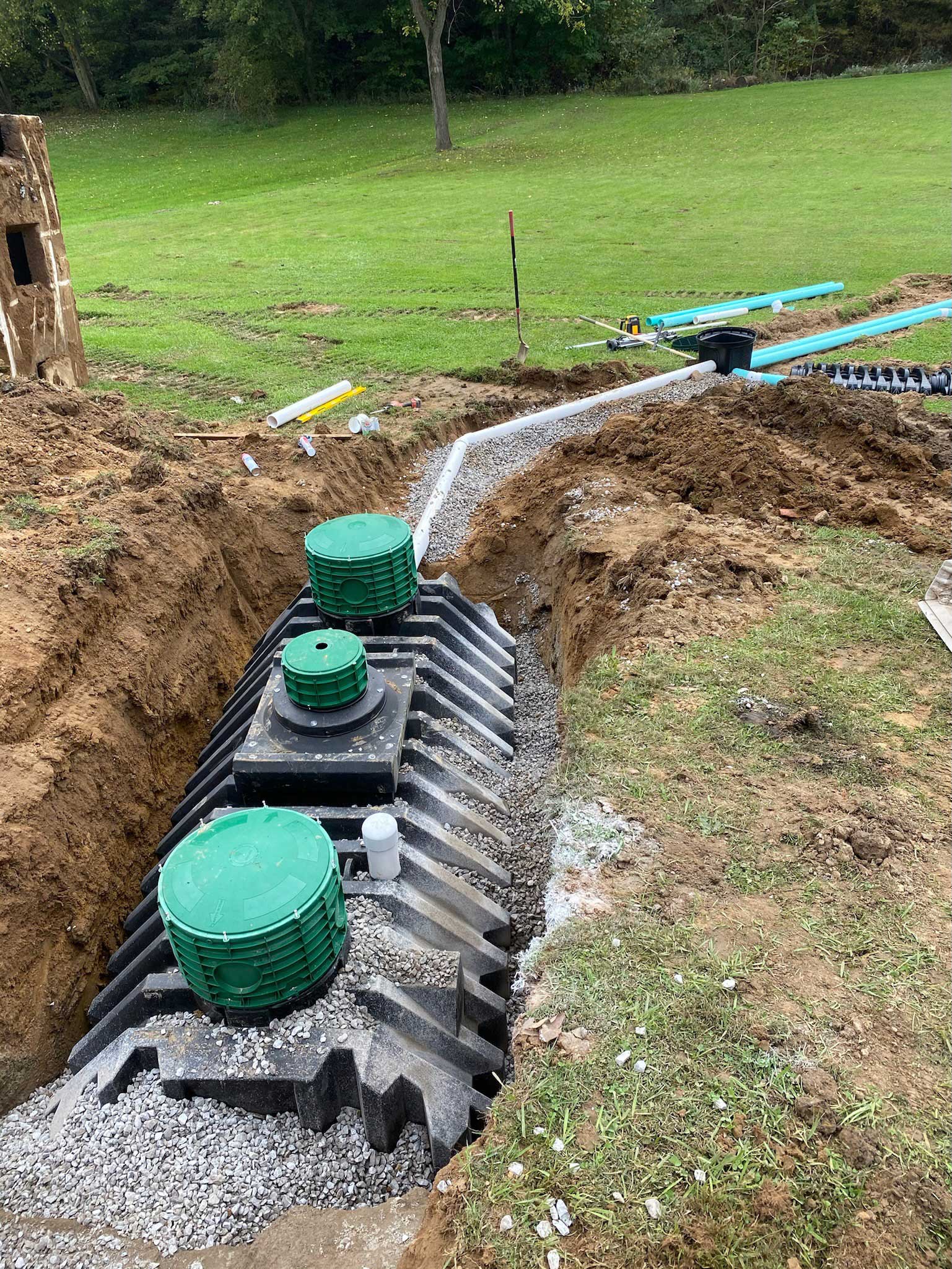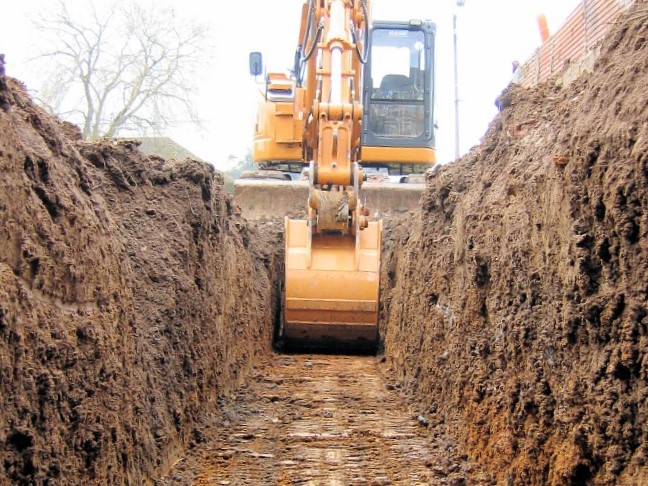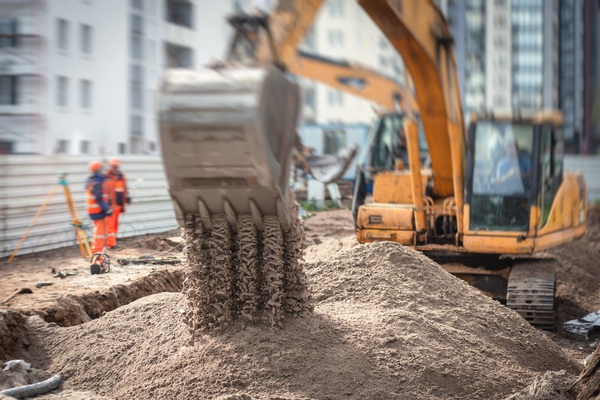Commercial Lancaster Trenching - Trenching Solutions for Businesses in Lancaster
Commercial Lancaster Trenching - Trenching Solutions for Businesses in Lancaster
Blog Article
Unveiling the Art of Excavation: Pro Tips for Safe and Efficient Excavating
As soil is turned and earth is moved, the ins and outs of excavation reveal themselves, requiring an eager understanding of tools, soil make-up, safety procedures, and environmental considerations. The know-how required to browse these aspects effectively can mean the difference in between a successful excavation job and a possible disaster.
Importance of Appropriate Tools
To guarantee the safety and performance of any type of excavation job, utilizing the appropriate devices is extremely important. Excavation tasks vary in extent and complexity, varying from small residential landscape design jobs to massive building and construction endeavors.
Excavators are basic items of machinery in any type of digging operation. These versatile equipments come in different sizes to match various project demands. Mini excavators are optimal for smaller jobs, while larger excavators deal with a lot more considerable jobs effectively. Backhoes are one more essential tools type, incorporating the functions of a loader and an excavator in one equipment. They are useful for jobs requiring convenience and maneuverability.
Excavators succeed in tasks that call for pushing big amounts of dirt or debris. By spending in the suitable devices, excavation jobs can be completed safely, on time, and with precision.
Comprehending Soil Structure
A comprehensive grasp of dirt structure is essential for executing excavation jobs with accuracy and safety and security. Understanding the various sorts of soil is essential as it straight impacts excavation techniques, equipment option, and total job effectiveness. Soil make-up typically includes four major components: sand, silt, clay, and natural matter. Each element has special buildings that influence just how dirt reacts to excavation processes.
Sand bits are the biggest and provide great drainage however supply little communication. Silt bits are smaller sized than sand yet larger than clay, using moderate drainage and cohesion. Clay bits are the tiniest and offer high communication yet bad drain. Organic issue, such as decomposing plant material, influences soil fertility and stability.
Before starting excavation, conducting soil examinations to identify its composition and attributes is vital. This information aids in picking the suitable equipment, applying precaution, and developing excavation approaches tailored to the specific dirt conditions - septic ohio. By understanding soil make-up, excavation specialists can improve job end results while making sure security and adherence to ideal methods
Safety Procedures and Procedures
Recognizing soil composition is the keystone upon which precaution and protocols for excavation tasks are developed, making sure the well-being of workers and the success of the venture. When it pertains to security during excavation, there are a number of vital procedures that must be executed to minimize threats and protect against mishaps.
First and primary, before any excavating starts, a detailed assessment of the site should be carried out to determine any type of potential hazards such as below ground energies, unsteady dirt conditions, or close-by frameworks that might pose a risk. It is vital to have an experienced person look after the excavation process to make certain that all security protocols are complied with strictly.
In addition, all employees involved in the excavation has to be effectively trained in risk-free digging practices and the correct procedure of devices. Personal safety tools (PPE) such as tough hats, high visibility garments, handwear covers, and security boots ought to be put on in all times to minimize the danger of injuries. lancaster trenching. Routine safety meetings and toolbox talks must likewise be carried out to maintain all this workers notified about possible hazards and strengthen safe work methods. By sticking to these safety and security actions and protocols, excavation projects can be completed efficiently and without event.
Efficient Excavation Planning
When getting started on an excavation project, precise planning is vital to make sure effectiveness, security, and effective end results. Efficient excavation planning entails a number of key actions that are crucial for the smooth implementation of the task. The very first step is to carry out a comprehensive website assessment to identify any type of possible risks, such as underground utilities or unsteady dirt conditions. This details is vital for establishing an in-depth excavation strategy that includes safety measures and risk mitigation techniques.
Once the website evaluation is total, the next action is to create a clear timeline and schedule for the excavation activities. This includes determining the sequence of jobs, equipment needs, and workforce allotment. Appropriate scheduling assists avoid hold-ups and makes sure that the task remains on track.

Moreover, interaction amongst all staff member is vital throughout the preparation phase. Clear instructions, routine updates, and efficient coordination are important for an effective excavation job. By investing time and initiative in careful preparation, excavation teams can substantially boost performance, minimize threats, and accomplish effective end results.

Taking Care Of Ecological Considerations
With boosting emphasis on environmental sustainability in building and construction methods, handling environmental factors to consider has actually become an essential element of excavation projects. Excavation activities have the potential to influence the surrounding environment with dirt erosion, sediment drainage, habitat disruption, and contamination click of water sources. To reduce these threats, it is necessary to execute ideal techniques that prioritize ecological defense.

Additionally, appropriate waste administration is important to stop soil and water contamination. Applying treatments for the disposal of harmful materials, recycling of waste products, and decreasing using damaging chemicals can dramatically lower the environmental influence of excavation projects. By integrating these techniques into excavation preparation and implementation, building and construction companies can ensure that their projects are not only safe and productive yet also eco liable.
Conclusion
Finally, understanding the art of excavation requires an extensive understanding of appropriate tools, dirt make-up, precaution, and efficient planning. By following these guidelines and taking into consideration environmental elements, excavations can be performed securely and successfully. It is important to prioritize safety and efficiency in every digging job to guarantee successful outcomes.
As dirt is turned and earth is moved, the details of excavation disclose themselves, requiring a keen understanding of devices, soil make-up, safety and security protocols, and ecological factors to consider.To make sure the safety and efficiency of any type of excavation job, using the appropriate tools is paramount.A thorough grasp of soil structure is essential for performing excavation jobs with precision and security. Comprehending the various kinds of dirt is critical as Go Here it directly affects excavation methods, devices option, and total project effectiveness. By comprehending soil composition, excavation experts can improve job results while ensuring safety and security and adherence to ideal practices.
Report this page